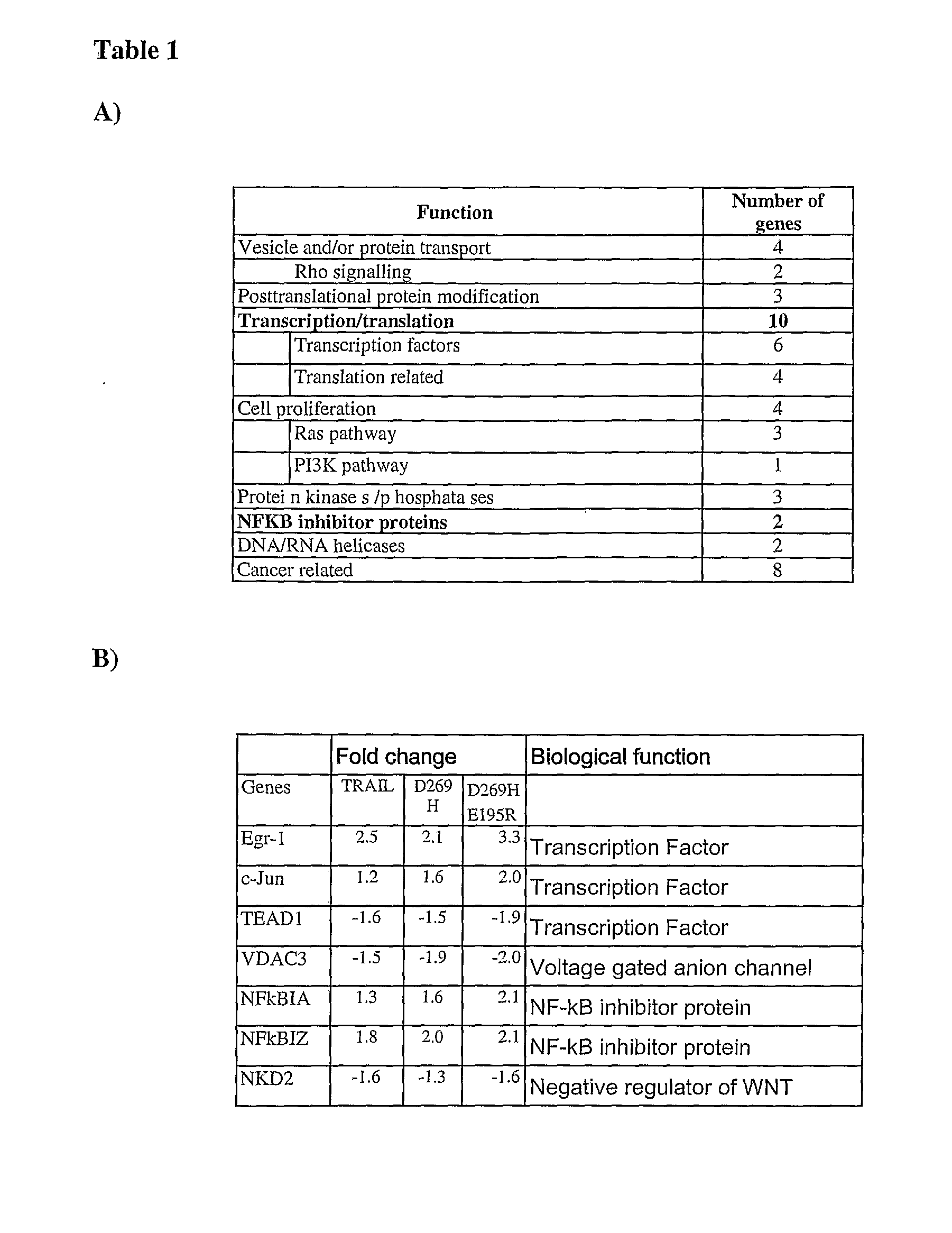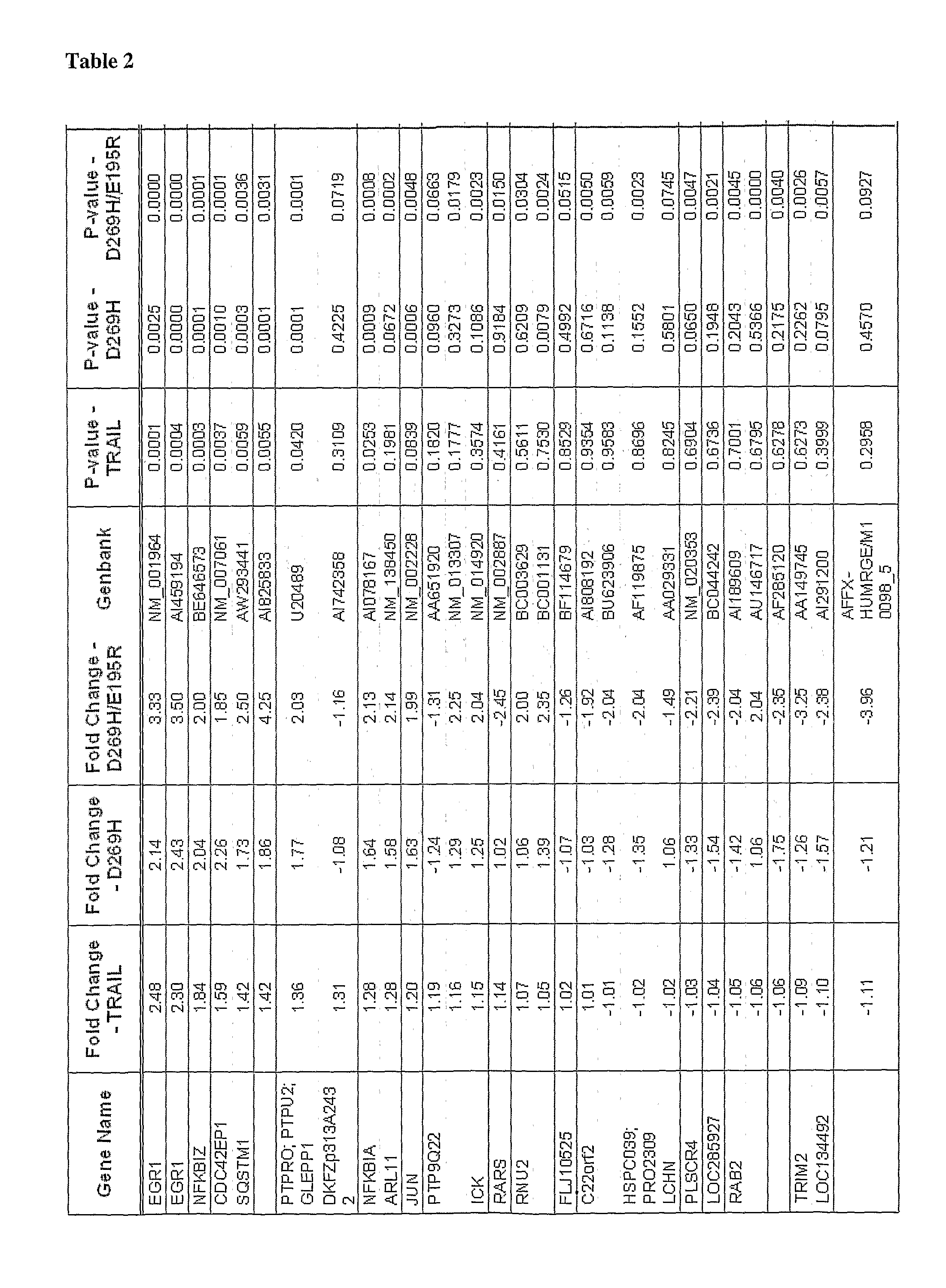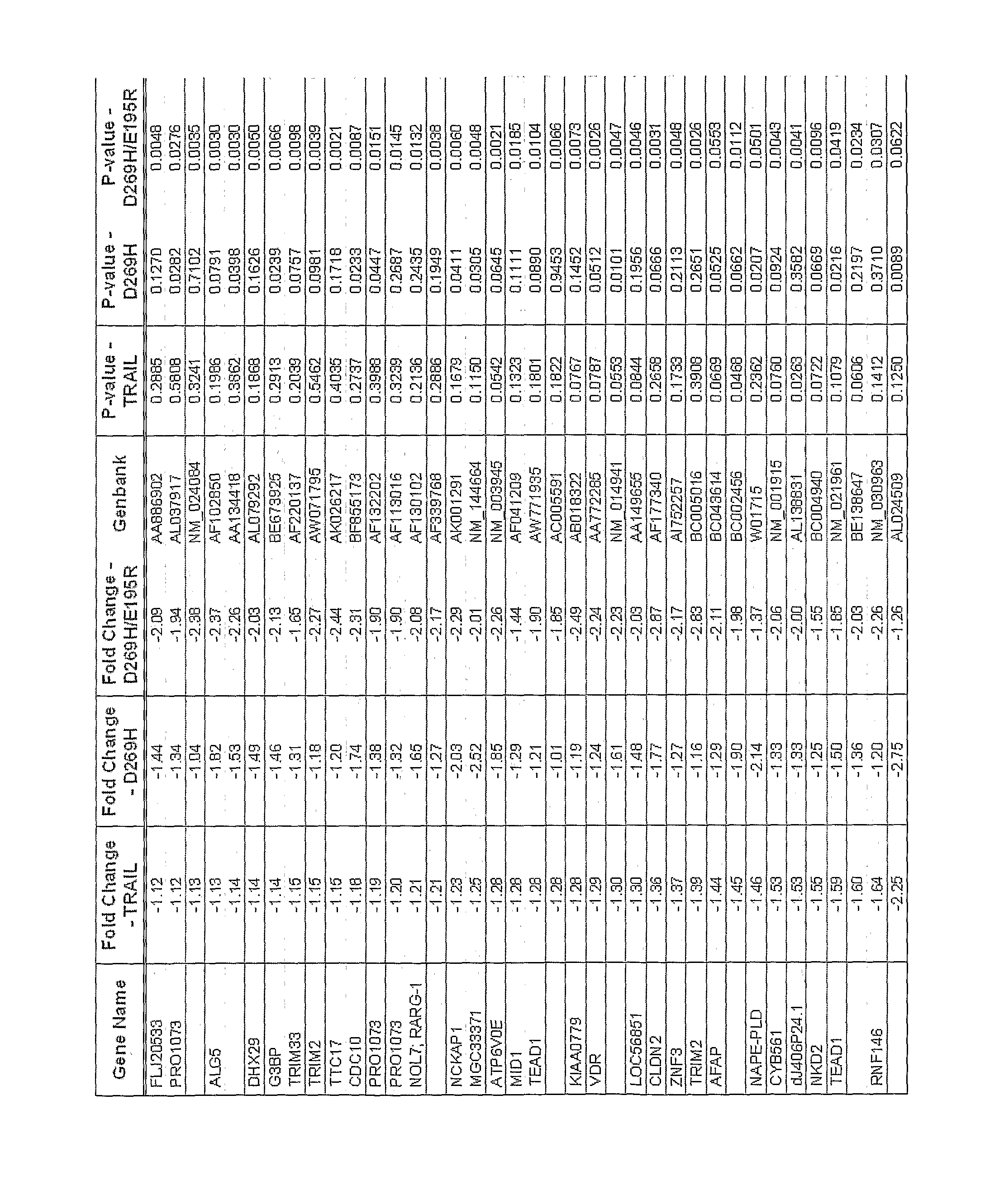Treatment of proliferative disorders with a death receptor agonist
a technology of proliferative disorders and agonists, which is applied in the direction of drug compositions, peptide/protein ingredients, antibody medical ingredients, etc., can solve the problem of complex underlying mechanisms of such resistance, and achieve the effect of increasing the affinity for fas
- Summary
- Abstract
- Description
- Claims
- Application Information
AI Technical Summary
Benefits of technology
Problems solved by technology
Method used
Image
Examples
example 1
[0112]Colo205 cells were obtained from American Tissue Culture Collection (ATCC). HCT15 and HCA7 cells were a kind gift from Prof. L. Egan (University College Hospital, Galway). Colo205 and HCT15 cells were maintained in RPMI-1640 medium and HCA7 in DMEM medium, both media supplemented with 10% foetal bovine serum (FBS), 2 mM glutamine, 50 U / ml penicillin and 50 mg / ml streptomycin at 37° C., 5% CO2 in a humidified incubator. Cells were seeded at 2×105 cells / ml one day prior to treatment. To induce apoptosis, cells were treated with rhTRAIL (non-tagged, fragment amino acids 114-281, Triskel Therapeutics, Groningen) and DR5-selective mutants D269H, D269H-E195R and D269H-T214R and agonistic DR4 or DR5 antibodies (Novartis Pharmaceuticals) at the concentration and times specified in the figure legends. All reagents were from Sigma-Aldrich unless otherwise stated.
example 2
Differential Expression of Genes Following Exposure of Cells to rhTRAIL and DR5-Selective TRAIL
[0113]To generate a profile of genes differentially regulated by TRAIL-receptors, Colo205 cells were treated with either rhTRAIL or the DR5-selective rhTRAIL variants D269H and D269H / E195R for 1 h. rhTRAIL is a soluble fragment template comprising amino acids 114-281 of wtTRAIL (accession number NM—003810.2, see also GB0724532.7 and GB0723059.2). Total RNA was isolated from these cells using GenElute RNA miniprep kit as per manufacturer's protocol. Reverse transcription (RT) was carried out with 2 μg RNA using Oligo(dT) primers (Invitrogen) and AMV Reverse Transcriptase. The cDNA product was subjected to 25-30 cycles of PCR using primers specific for Egr-1, c-Jun, TEAD-1, NKD2 VDAC3, NFKBIA and NFKBIZ. For normalisation, GAPDH PCR was carried out. The primers used for the PCR reactions were as follows:
Gene nameReverse sequenceForward sequenceEgr-15′-AAGAACTTGGACATGG5′-GAAAGAAAGGGAAAAGGCCTG...
example 3
Overexpression of Dominant Negative Egr-1 Increases Apoptosis Induced by DR5
[0118]To determine whether Egr-1 plays a role in TRAIL-induced apoptosis, HCT15 cells were transiently transfected with a dominant negative Egr-1 expressing plasmid (EBGN-Egr-1, Al-Sarraj A et al. (2005); J Cell Biochem 94: 153-167), which encodes an Egr-1 mutant that lacks the trans activation domain of wild type Egr-1. Cells (2×106) were pelleted and resuspended in transfection solution V (Amaxa) containing either 2.5 μg of mammalian dominant negative Egr-1 construct (EBGN-EGR-1) or empty vector (EBGN), a kind gift from G. Thiel. Similarly stable transfection of Bcl-2 plasmid or the empty vector (Neo) was generated in HCT15 cells using the similar transfection solution and stable clones generated following treatment with 1 μM of G418. Cells were transfected by nucleofection using program T13 as per manufacturer's protocol (Amaxa). GFP plasmid (2.5 μg) was also transfected into cells to determine transfecti...
PUM
| Property | Measurement | Unit |
|---|---|---|
| time | aaaaa | aaaaa |
| concentration | aaaaa | aaaaa |
| concentration | aaaaa | aaaaa |
Abstract
Description
Claims
Application Information
 Login to View More
Login to View More - R&D
- Intellectual Property
- Life Sciences
- Materials
- Tech Scout
- Unparalleled Data Quality
- Higher Quality Content
- 60% Fewer Hallucinations
Browse by: Latest US Patents, China's latest patents, Technical Efficacy Thesaurus, Application Domain, Technology Topic, Popular Technical Reports.
© 2025 PatSnap. All rights reserved.Legal|Privacy policy|Modern Slavery Act Transparency Statement|Sitemap|About US| Contact US: help@patsnap.com



